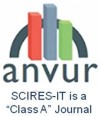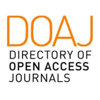Articles
Abstract
En
The most significant results obtained by Information Technologies Lab (IBAM CNR - ITLab) in the construction of VR-based knowledge platforms have been achieved in projects such as ByHeriNet, Archeotour, Interadria, Interreg Greece-Italy, Iraq Virtual Museum, etc. These projects were guided by the belief that in order to be effective, the process of communicating Cultural Heritage to the wider public should be as free as possible from the sterile old VR interfaces of the 1990s. In operational terms, this translates into solutions that are as lifelike as possible and guarantee the maximum emotional involvement of the viewer, adopting the same techniques as are used in modern cinema. Communication thus becomes entertainment and a vehicle for high-quality content, aimed at the widest possible public and produced with the help of interdisciplinary tools and methods. In this context, high-end technologies are no longer the goal of research; rather they are the invisible engine of an unstoppable process that is making it harder and harder to distinguish between computer images and real objects. An emblematic case in this regard is the reconstructive study of ancient contexts, where three-dimensional graphics compensate for the limited expressive potential of two-dimensional drawings and allows for interpretative and representative solutions that were unimaginable a few years ago. The virtual space thus becomes an important opportunity for reflection and study, as well as constituting a revolutionary way to learn for the wider public.
It
I risultati più significativi ottenuti dall’Information Technologies Lab (IBAM CNR - ITLab) nella costruzione di piattaforme di conoscenza basate sulla Realtà Virtuale, sono stati conseguiti nell’ambito di progetti internazionali quali ByHeriNet, Archeotour, Interadria, Interreg Greece-Italy, Iraq Virtual Museum, ecc. Il nostro lavoro in questi progetti è costantemente caratterizzato dalla convinzione che l’efficacia del processo di comunicazione dei Beni Culturali sia strettamente connesso ad una rappresentazione il più possibile svincolata dalle sterili interfacce di RV degli anni novanta. Oggi la rappresentazione deve essere necessariamente proiettata sul piano del realismo e del coinvolgimento emotivo dello spettatore, utilizzando le stesse tecniche che la moderna cinematografia ci propone. La comunicazione in questo caso diventa spettacolo e veicolo di contenuti di alto livello, rivolta a tutti, ma realizzata con strumenti di grande valore scientifico, dove il legante rimane ancora una volta l’inter-disciplinarietà ed il necessario dialogo dei saperi. In questo contesto, le tecnologie high-end non sono più l'obiettivo della ricerca, ma sono il motore invisibile di un processo inarrestabile che rende sempre più difficile la distinzione tra immagini di sintesi e oggetti reali. Un caso emblematico, a tal fine, è rappresentato dallo studio ricostruttivo dei contesti antichi, dove la grafica tridimensionale sopperisce alle limitate possibilità espressive del disegno bidimensionale ed offre soluzioni interpretative e rappresentative fino a pochi anni fa inimmaginabili. Lo spazio virtuale diventa quindi momento importante di riflessione e di studio, ma costituisce soprattutto per il grande pubblico, un modo rivoluzionario per apprendere.
The most significant results obtained by Information Technologies Lab (IBAM CNR - ITLab) in the construction of VR-based knowledge platforms have been achieved in projects such as ByHeriNet, Archeotour, Interadria, Interreg Greece-Italy, Iraq Virtual Museum, etc. These projects were guided by the belief that in order to be effective, the process of communicating Cultural Heritage to the wider public should be as free as possible from the sterile old VR interfaces of the 1990s. In operational terms, this translates into solutions that are as lifelike as possible and guarantee the maximum emotional involvement of the viewer, adopting the same techniques as are used in modern cinema. Communication thus becomes entertainment and a vehicle for high-quality content, aimed at the widest possible public and produced with the help of interdisciplinary tools and methods. In this context, high-end technologies are no longer the goal of research; rather they are the invisible engine of an unstoppable process that is making it harder and harder to distinguish between computer images and real objects. An emblematic case in this regard is the reconstructive study of ancient contexts, where three-dimensional graphics compensate for the limited expressive potential of two-dimensional drawings and allows for interpretative and representative solutions that were unimaginable a few years ago. The virtual space thus becomes an important opportunity for reflection and study, as well as constituting a revolutionary way to learn for the wider public.
It
I risultati più significativi ottenuti dall’Information Technologies Lab (IBAM CNR - ITLab) nella costruzione di piattaforme di conoscenza basate sulla Realtà Virtuale, sono stati conseguiti nell’ambito di progetti internazionali quali ByHeriNet, Archeotour, Interadria, Interreg Greece-Italy, Iraq Virtual Museum, ecc. Il nostro lavoro in questi progetti è costantemente caratterizzato dalla convinzione che l’efficacia del processo di comunicazione dei Beni Culturali sia strettamente connesso ad una rappresentazione il più possibile svincolata dalle sterili interfacce di RV degli anni novanta. Oggi la rappresentazione deve essere necessariamente proiettata sul piano del realismo e del coinvolgimento emotivo dello spettatore, utilizzando le stesse tecniche che la moderna cinematografia ci propone. La comunicazione in questo caso diventa spettacolo e veicolo di contenuti di alto livello, rivolta a tutti, ma realizzata con strumenti di grande valore scientifico, dove il legante rimane ancora una volta l’inter-disciplinarietà ed il necessario dialogo dei saperi. In questo contesto, le tecnologie high-end non sono più l'obiettivo della ricerca, ma sono il motore invisibile di un processo inarrestabile che rende sempre più difficile la distinzione tra immagini di sintesi e oggetti reali. Un caso emblematico, a tal fine, è rappresentato dallo studio ricostruttivo dei contesti antichi, dove la grafica tridimensionale sopperisce alle limitate possibilità espressive del disegno bidimensionale ed offre soluzioni interpretative e rappresentative fino a pochi anni fa inimmaginabili. Lo spazio virtuale diventa quindi momento importante di riflessione e di studio, ma costituisce soprattutto per il grande pubblico, un modo rivoluzionario per apprendere.
Full Text:
PDFDOI: http://dx.doi.org/10.2423/i22394303v1n1p53
References
Article Metrics
Metrics Loading ...
Metrics powered by PLOS ALM
Refbacks
- There are currently no refbacks.
Copyright (c) 2011 Francesco Gabellone

This work is licensed under a Creative Commons Attribution-NonCommercial-NoDerivatives 4.0 International License.
SCIRES-IT, e-ISSN 2239-4303
Journal founded by Virginia Valzano





